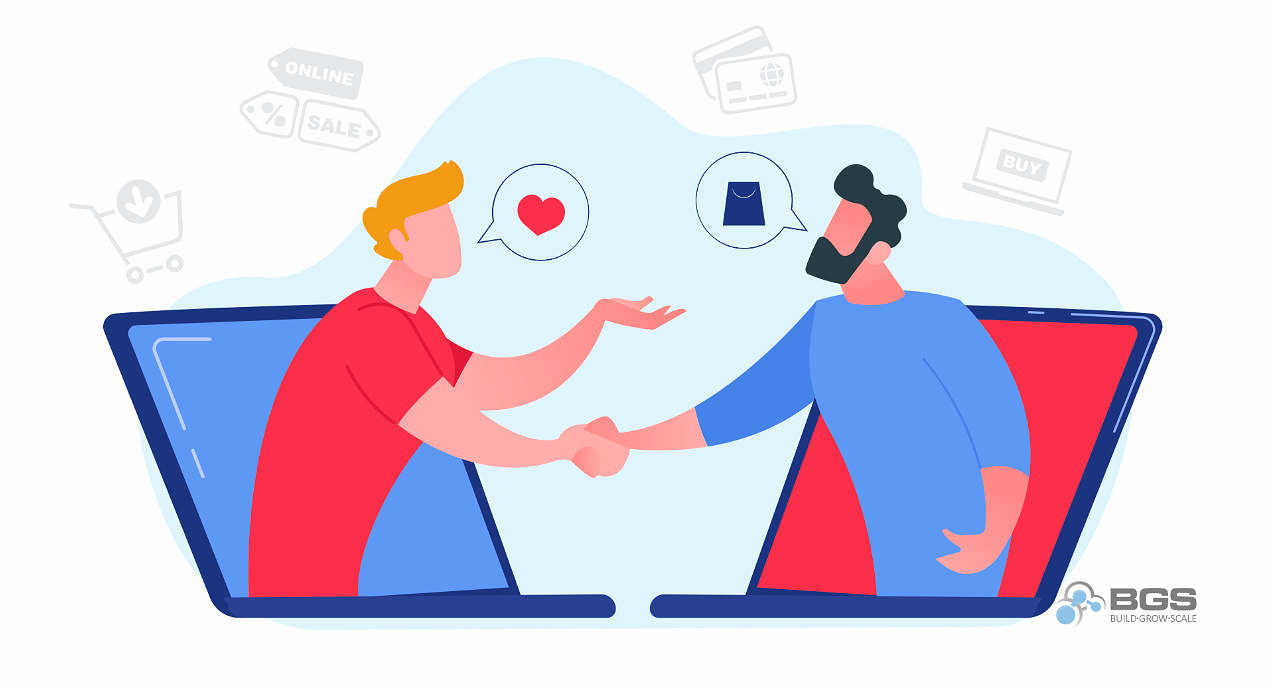Consistency: The Secret to Building Trust with Your Ecommerce Customers

Back when we started optimizing ecommerce stores, we discovered that traffic was not the problem when it came to improving conversion rates. We eagerly tested many things to see what would increase conversions, and one of the things that kept coming up was trust.
In the early days of ecommerce, when people were a little reluctant to shop online, it was all about whether or not they could trust online stores. While modern ecommerce shoppers are more experienced with shopping online, trust remains an issue: people need to trust you before they’ll buy from your store.
In one of those early tests, we decided to change one of our store’s theme colors to match the Facebook shade of blue. The result was an increase in conversions and a decrease in bounce rates. Why? I believe that Facebook had already gained the trust of users, and we speculated that the consistency in color would evoke a similar trust and comfort level, and that proved to be true. When people left Facebook (via an ad to our store), the color consistency provided a smooth transition even though the two websites had very different content.
You don’t have to use Facebook’s shade of blue in your theme! But you do want to present your brand’s unique identity consistently to convey your brand message across multiple channels.
Consistency in branding creates brand reputation and reliability, which, in turn, create trust. Of course, following up by offering your customers a consistent high-quality standard in service and product validates and builds on that trust.
Checking Consistency
Visitors to your ecom store have technical and visual experiences as they maneuver through your website and across the platforms where you present your message. You should be managing experiences such as technical factors, promotional imagery, voice, and customer service to ensure there is consistency throughout.
Technical factors
A 2007 article on the impact of consistency in customer relationship management (CRM) states that consistency in ecommerce consists in part of “technical treatment factors” (such as transaction steps, navigation methods, and design).
For example, if you decide that the call-to-action (CTA) buttons in your store should be green, make sure that that color is consistently applied across all pages. This makes it easy for customers to follow during their shopping journey while not interfering with their cognitive thinking process.
Promotional imagery
Make sure that the promotional imagery in your ads is consistent with the style and type of imagery on your store. When customers click through to the store, they may be aware of a transition but should still experience consistency in content and/or imagery.
Lack of consistency between your ads and the store can make customers question whether they’ve landed on the correct store, putting the store’s authenticity in doubt.
Voice
Consistency can also be applied to voice (the style in which you communicate). A similar voice should be used across all platforms.
Nike and Apple are two brands that are easily recognizable by voice as well as image. They found a way to communicate their message that made it easy for their customers to distinguish these well-liked brands from their competitors. And they stuck with it: their style (voice) and content (illustrations, logo, graphics, and more) are consistent across their website, social media pages, and ads.
Customer service
The 2007 article mentioned above also describes “customer treatment factors” (including marketing promotions, guarantees, and return policies).
Show your customer the guarantees you offer by putting them on every page of the store. Although it may seem redundant, this process assures and reassures potential customers as they go through their shopping journey.
For the ecommerce stores we work with, we’ve covered this issue by placing the guarantees in the hot spots of each page so customers can easily see them.
Note: Hot spots are those areas that users interact with the most, thus, places on the page that would rarely be missed.
We also addressed product origin and manufacturing location by displaying the US flag as a visual with the message “Made and shipped in the USA.” This served as a reassurance to customers that we know their questions and concerns, and have addressed (or will address) them.
Keep in mind that consistency is good for other aspects of your ecommerce store too, such as product quality, communications with your customers, and how you make your customers feel when you and they cross paths.
Conclusion
Using inconsistent content, imagery, or voice makes your brand harder to distinguish from others. And if customers feel like they’re shopping at different stores because of inconsistencies, they’ll abandon the course. Inconsistency can make potential customers distrust you and current customers have doubts about whether they made the right choice by associating with your brand.
Emerging ecommerce brands need to learn the art of consistency, to figure out what works for their customers and use it across all channels.
As an ecommerce store owner, be aware that you might be losing customers every day due to inconsistency. But improving in this area can have a real and positive impact on your business, especially when you gain the trust of your customers.
Resources
Ant Ozok, A., K. Oldenburger, and G. Salvendy. (2007). Impact of consistency in customer relationship management on e-commerce shopper preferences. Journal of Organizational Computing and Electronic Commerce.






